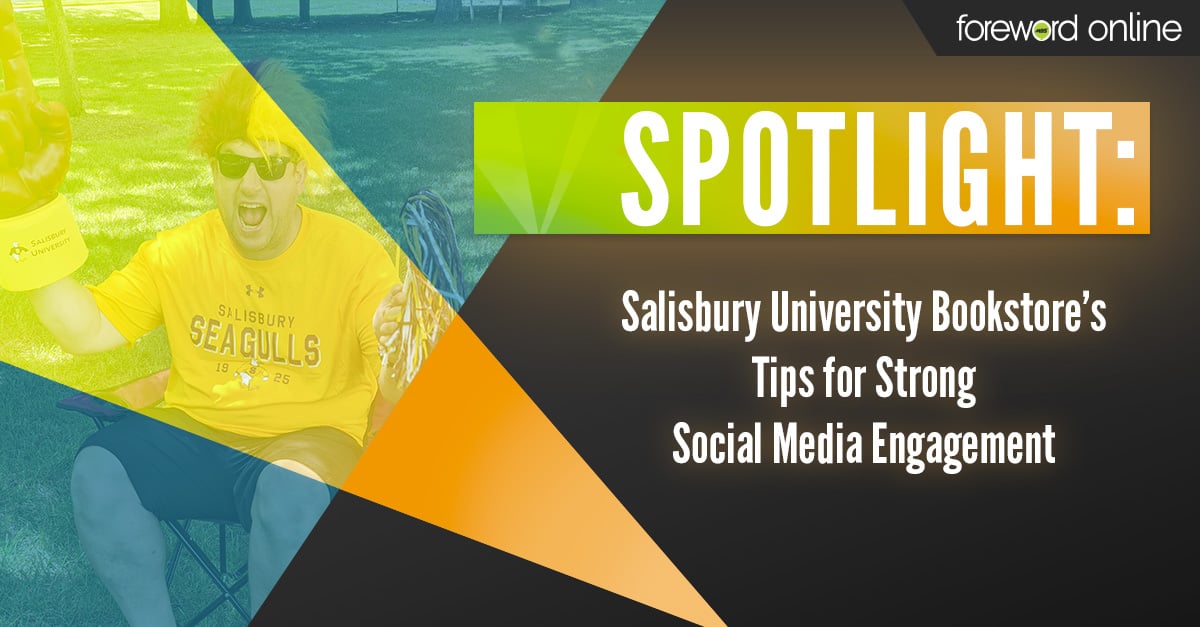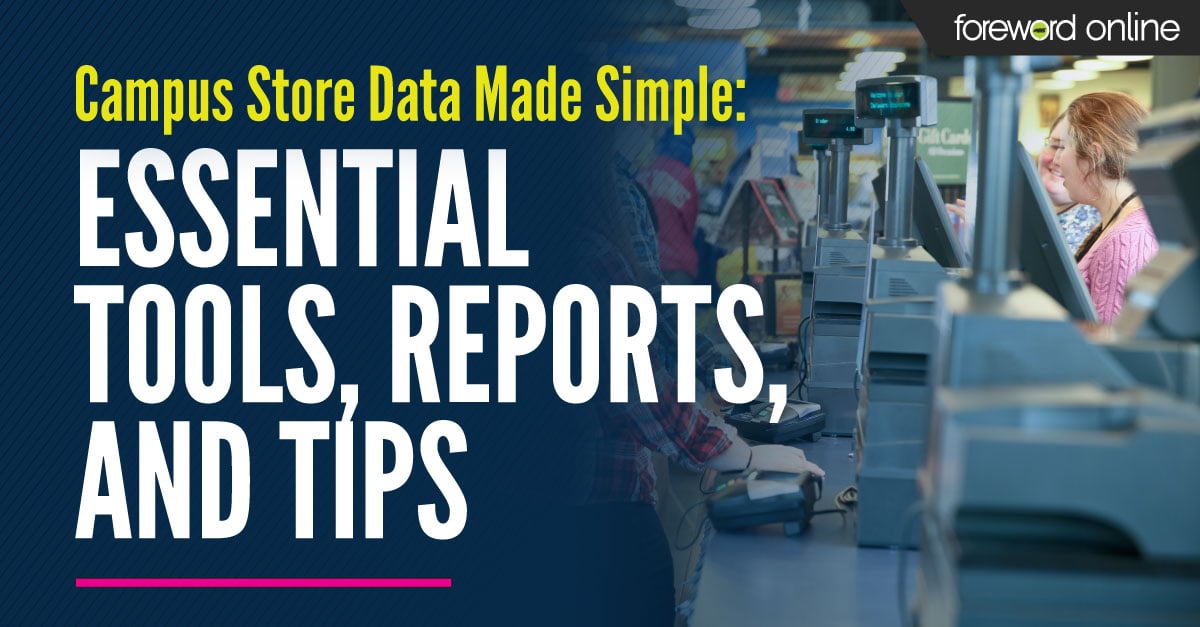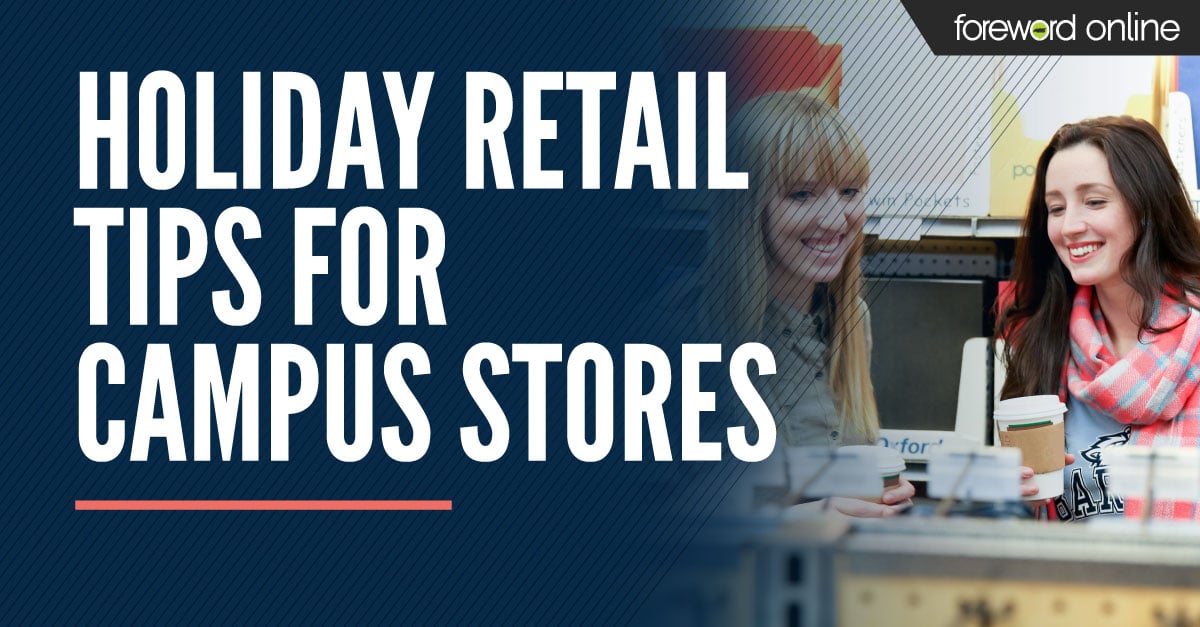Social media can help drive store traffic (both in-store and online), and it can even be an additional revenue stream for your college store. That’s why it is worth devoting time to strengthen your social media presence and maximize student engagement. We recently sat down with Salisbury University Bookstore’s Merchandiser Bryan Hailey and Merchandiser Emily Davis to discuss their store’s approach to social media marketing.
 Your store shares a lot of fun videos on Facebook. When did you start making videos for social media and what prompted it?
Your store shares a lot of fun videos on Facebook. When did you start making videos for social media and what prompted it?
Hailey: We started doing videos about a year ago. After some research, we learned that videos tend to get more interaction on social media, especially Instagram. Trying to grow our followers on all platforms has been a slow go, so we were willing to try anything. Since I don’t mind being on camera, we gave it a shot.
What has been the campus community response to your videos?
Hailey: The campus community response has been interesting. We get a fair amount of views, but not too many comments. That leaves us unsure exactly how they are landing. But then I will have customers and staff from other parts of campus come in the store and tell me they love the videos or that they “watched all your videos all summer.” It’s good to know people are at least watching.
What type of videos perform best?
Hailey: I think all the videos have the same level of success as far as customer engagement and click-throughs that drive business. The silly ones usually get a few more comments or likes.
What forms of social media marketing have had the best return for the store?
Hailey: It seems like the various platforms perform better with different customer segments. Facebook seems to hit with the older customers like alumni and parents. Sometimes, parents will even tag their kids to pass on the info they would not have seen otherwise. Instagram is definitely more relevant with current students.
How has your use of social media marketing changed since the pandemic started?
 Hailey: During the pandemic, we honed and expanded our social media output. For one, we had more time to plan posts and make videos. Our store was closed for over three months. During that time, online sales were our lifeblood, especially for clothing and other general merchandise. We knew we weren’t going to have people walking the store browsing, so we needed to take the browsing to them. Social media was far and away the best way to drive more eyeballs to our website. For instance, we had planned an in-store, after-hours Midnight Madness event in April. Instead, we had an online sale during the same hours, offering discounts on various items. Social media was instrumental in getting the word out. It performed beyond our expectations. Using the pattern we developed during the pandemic, we have begun making a monthly social media calendar, planning posts at least four weeks in advance. We can add in new posts if we want to communicate timely Information or fresh products, but the monthly calendar gives us a framework to rely on, especially during busy times like book rush.
Hailey: During the pandemic, we honed and expanded our social media output. For one, we had more time to plan posts and make videos. Our store was closed for over three months. During that time, online sales were our lifeblood, especially for clothing and other general merchandise. We knew we weren’t going to have people walking the store browsing, so we needed to take the browsing to them. Social media was far and away the best way to drive more eyeballs to our website. For instance, we had planned an in-store, after-hours Midnight Madness event in April. Instead, we had an online sale during the same hours, offering discounts on various items. Social media was instrumental in getting the word out. It performed beyond our expectations. Using the pattern we developed during the pandemic, we have begun making a monthly social media calendar, planning posts at least four weeks in advance. We can add in new posts if we want to communicate timely Information or fresh products, but the monthly calendar gives us a framework to rely on, especially during busy times like book rush.
Davis: Basically, during the coronavirus, the store was closed for a few months. We had to let our Sea Gulls know that we were still there for them during these crazy times. We did our best to be as communicative as possible via social media because, aside from emailing, that was our only lifeline. We created a social media calendar and posted on our platforms every single day. Some posts were informative about COVID-19, some posts were inspirational, and some were funny posts or videos to lighten the mood.
 We also tried to humanize ourselves. We are not just “the bookstore.” We are people, too, and we care about and understand the struggles that we all were facing. To spread that message, we did a weekly “Meet Our Staff” post. Each week, a new staff member was chosen to answer a few funny, light-hearted questions about themselves. For example, favorite food, the last TV show you binged, and what superpower would you choose, etc. Also, doing the funny videos with Bryan helped humanize us a little bit more. People, especially the younger generations, have a short attention span when it comes to social media. We know that most people just keep scrolling mindlessly, so we tried to produce funny, attention-grabbing posts that would get students, parents and alumni to engage with us.
We also tried to humanize ourselves. We are not just “the bookstore.” We are people, too, and we care about and understand the struggles that we all were facing. To spread that message, we did a weekly “Meet Our Staff” post. Each week, a new staff member was chosen to answer a few funny, light-hearted questions about themselves. For example, favorite food, the last TV show you binged, and what superpower would you choose, etc. Also, doing the funny videos with Bryan helped humanize us a little bit more. People, especially the younger generations, have a short attention span when it comes to social media. We know that most people just keep scrolling mindlessly, so we tried to produce funny, attention-grabbing posts that would get students, parents and alumni to engage with us.
Lastly, we started a “Deal of the Week” and made discount codes for our online store. These discounts were posted on our website and our social media pages to spread the word. We did discounts for specific merchandise, along with discounts and care packages for graduates because their graduation was cancelled. We tried to stress the message of “THE SU BOOKSTORE IS HERE FOR YOU!”
We learned a lot and grew our social media following tremendously, so we are trying to keep that momentum going present day.
Why are videos a great way to communicate with students?
 Hailey: Videos are a great way to engage because students are less likely to scroll by. It’s an easy way to convey relevant information in a (hopefully) fun way. When I make a silly video, I don’t care if the students are laughing with me or at me, as long as they are watching. Because if they watch, they may learn about a new process or product they may have missed had they scrolled past a photo or plain text. I always make sure to wear current products when making the videos. After one of our earlier videos, we had more requests about the sweatshirt I was wearing in the video than about whatever I was talking about. That was instructive. The lesson was squeeze as much information, even indirectly, into the video as possible.
Hailey: Videos are a great way to engage because students are less likely to scroll by. It’s an easy way to convey relevant information in a (hopefully) fun way. When I make a silly video, I don’t care if the students are laughing with me or at me, as long as they are watching. Because if they watch, they may learn about a new process or product they may have missed had they scrolled past a photo or plain text. I always make sure to wear current products when making the videos. After one of our earlier videos, we had more requests about the sweatshirt I was wearing in the video than about whatever I was talking about. That was instructive. The lesson was squeeze as much information, even indirectly, into the video as possible.
What advice would you give other college stores that want to strengthen their social media marketing efforts?
Hailey: Be consistent with your posts. Regular posting gets more eyeballs. Ask questions, post polls, or use other ways to seek a comment or reaction from viewers. Then be sure to answer their comments or questions. That interaction will have your posts show up more consistently in viewers’ feeds. Don’t be afraid to try videos. They don’t have to be fancy. Even going live can be fun and people don’t mind rough edges if you are being spontaneous. Remember, we are catering to students who live their lives online and who use video (TikTok, YouTube, etc.) constantly. Your content doesn’t have to be perfect. It just needs to be engaging and convey the message you need to get across. Most of all, have fun with it. If you have to work, you might as well enjoy it.





